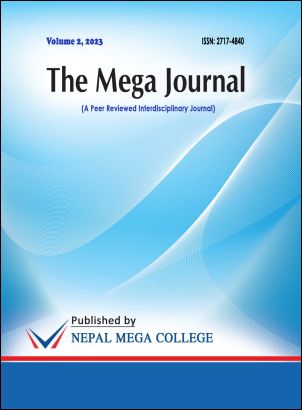Work Life Balance among Women Employees in Service Sector with Special Reference to Banking Industry in Kathmandu Valley
DOI:
https://doi.org/10.3126/tmj.v2i1.53206Keywords:
Work life balance, female employees, bankingAbstract
This study was interested in female bank employees’ perceptions of work life balance at banking institutions in Kathmandu. The Job Demands-Resources (JD-R) Model was used as a theoretical framework to consider the demands that these women encounter as well as the support systems that they utilize to help facilitate work-life balance (WLB). Importantly, as a theoretical framework, the JD-R was used to bring to light employee experiences of their WLB in relation to their work demands and the resources that are available to them. A qualitative research design was used. Semi-structured interviews on a purposive sample of eight research participants were conducted within eight commercial banks of Kathmandu. Theory-led thematic analysis was used to analyze the interview transcripts. The findings of the study indicated that these women relied heavily upon domestic helpers in terms of household duties, extended family and their spouses in terms of childcare duties and needs. These employees felt that work dominates their lives more due to the core demands of meeting targets. These employees perceived that the bank as a whole was not supportive of WLB as they claimed to be and wanted to be involved with the HR Department in the formation of work-life balance policies. This research study offers insight into the needs of female bank employees and suggests the way forward for organizations to appropriately prioritize WLB as a quality strategy in an attempt to retain talented women in the organization.




